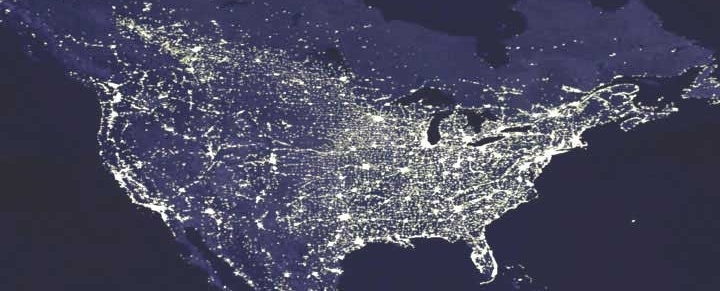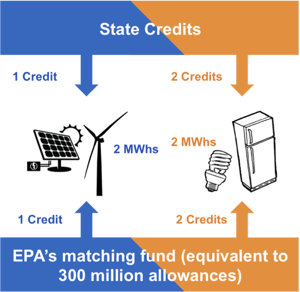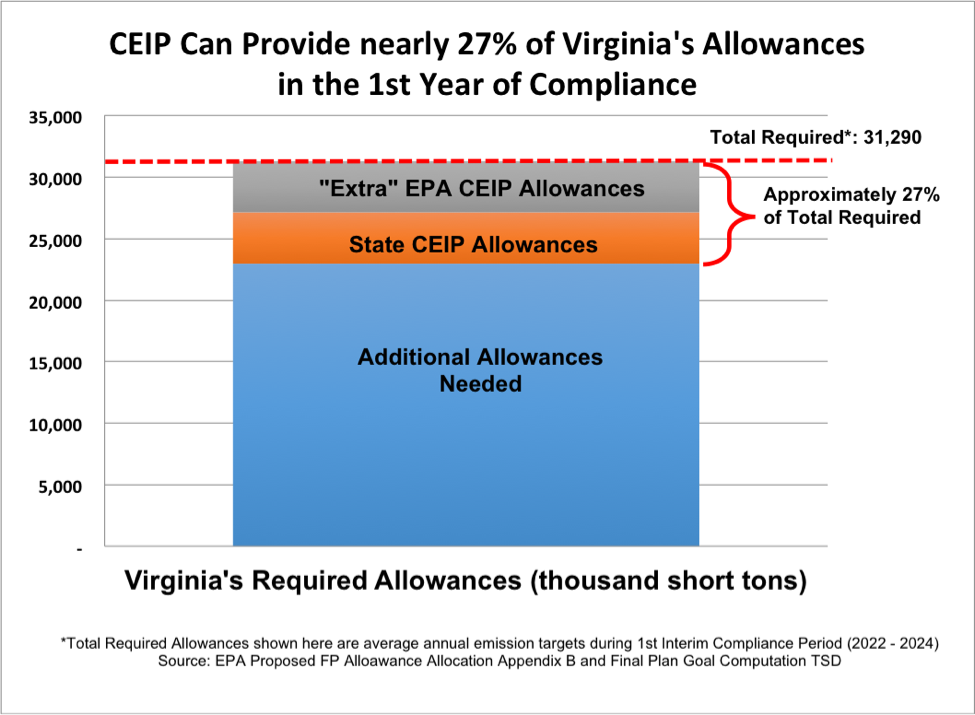
EPA’s greenhouse gas regulation, the Clean Power Plan, won’t take effect until 2022, but planning is already well underway in states across the country. Initial state compliance plans are due in September of this year but many states will opt for an extension and submit final plans in 2018. As states think about how to reduce carbon emissions from existing power plants, many of them are turning to advanced energy which is already being deployed across the country at a growing rate. They should do so earlier, rather than later. That’s because EPA is allowing them to get credit for some advanced energy deployed before the official start of the Clean Power Plan compliance period in 2022. And too few states are aware of how much they could benefit from that.
EPA has set up an optional, early-action incentive program call the Clean Energy Incentive Program (CEIP). For CEIP, EPA is establishing a sizeable fund of extra compliance credits from which it will match credits that participating states award to eligible projects, which include energy efficiency in low-income communities and wind and solar installations. CEIP gives states an opportunity to get free matching credits from EPA for emission reduction measures they would likely implement anyway. It also makes compliance easier by letting states spread emission reductions over a longer period of time.
Participation is entirely voluntary, but states have nothing to lose. All a state has to do is submit with its initial plan in September (if requesting an extension) a non-binding declaration of intent to participate and establish the infrastructure for distributing early-action credits. Projects completed after the state submits its final plan (due September 2018) are eligible to earn credits starting in 2020, so the earlier the plan is completed, the more projects can qualify.
There are several reasons why states should consider participating in the program. For one, CEIP makes Clean Power Plan compliance easier. Under the Clean Power Plan, states can choose either a rate-based (lbs CO2/MWh) or mass-based (tons CO2) approach to compliance. States can participate in the CEIP under either approach. And under both approaches, power plants will need to start acquiring enough rate-based or mass-based credits to meet their compliance obligations for the first of the Clean Power Plan’s compliance periods, which lasts from 2022 to 2024. CEIP allows participating states to start awarding credits to eligible projects in 2020, two years before the compliance period begins. Starting in 2022, project providers holding CEIP credits will be able to sell them to power plants, giving those plants an easy way to begin meeting their emission reduction requirements.
Two types of projects are eligible to participate in CEIP: renewable energy projects and energy efficiency in low-income communities. For renewable energy, grid-tied wind and solar projects that commence construction after the state submits its final plan are eligible to receive credit. For energy efficiency, only projects implemented in low-income communities that commence operation after final plan submission are eligible. Final state plans are due in September 2018, but if a state submits its final plan before that, it will have more time for project completion, meaning more projects will qualify for credit awards beginning in 2020.

In addition, projects receiving credit under CEIP will go twice as far towards helping the state meet its compliance obligations. This is because EPA is establishing a fund of EPA-issued matching credits. Participating states will issue credits of their own to eligible projects, and EPA will issue matching credits from its CEIP fund, doubling their value. Wind and solar projects will each receive two credits for every 2 MWhs they generate, one from the state and one from EPA’s matching fund.
In addition, CEIP will award double credit to energy efficiency in low-income communities, to incentivize efficiency projects in vulnerable areas. These projects in low-income communities will earn two credits from the state, and two credits from EPA, for every 2 MWhs they save. With lifespans of many years in some cases, these early-action wind, solar, and low-income community energy efficiency projects will continue to reduce emissions throughout the compliance period, in addition to earning extra credits before the compliance period.
The number of potential credits available under the CEIP is significant. EPA’s matching fund will be equivalent to 300 million short tons of CO2 nationally. If fully distributed, these allowances would be enough to cover 18% of final target carbon emissions in 2030 nationwide. Because CEIP credits will be distributed to states based on their pro-rata share of required reductions, each state will have access to enough “free” credits from EPA’s fund to give them a jump on compliance, no matter what their starting emissions are.
The amount of credits available to each state varies. To use an example that is close to the median, Virginia would be eligible to borrow just over 4 million of its own allowances, or an equivalent number of emission rate credits (ERCs), from its first compliance period (2022–2024) and receive an equivalent match from EPA, for a total of about 8.3 million allowances (or equivalent ERCs) under CEIP. Using a mass-based example for purposes of illustration, Virginia’s power plants will have to retire about 30 million allowances annually during its first compliance period. Thus, the 8.3 million allowances available under the CEIP would help the state’s power plants cover more than a quarter of their emissions in the first year of the compliance period.
Half of these CEIP allowances would come from EPA’s match. These “extra” EPA allowances would allow Virginia’s power plants to emit more than the state’s overall target—approximately 15% more—making compliance easier. Moreover, projects that are implemented under CEIP will continue reducing emissions long after the early-action program is over. The industries that provide emissions reduction through renewable energy, energy efficiency, and other measures are also important economic drivers in Virginia and elsewhere. Analysis in Virginia of compliance with the proposed version of the Clean Power Plan showed substantial employment benefits for Virginia, and were even greater in a scenario where the state simultaneously aimed to increase its energy self-sufficiency.

Beyond the compliance benefits, investment in wind, solar, energy efficiency, and other advanced energy technologies provide consumer value, cost reduction, protection against fuel price volatility, and economic development. Numerous studies show that efficiency is generally the least-cost option for meeting demand and reducing emissions while simultaneously reducing bills for ratepayers. Prices for wind and solar have become cost competitive with traditional generation in many regions over the past five years. That’s why advanced energy has made up the vast majority of recent new electricity capacity additions nationally. CEIP rewards states for smart choice investments, some of which they would likely already be making – all the more reason for states to take advantage of it.